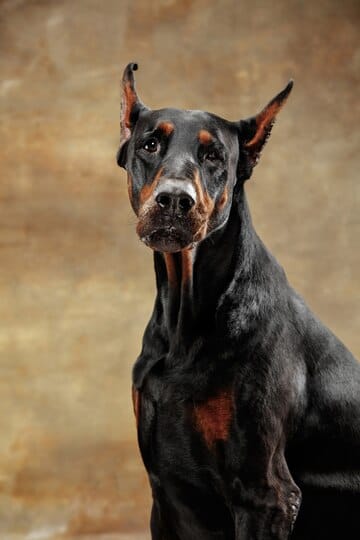- Introduction: The Colorful World of Poodle Eyes 🌈
- Understanding Poodle Genetics: The Basics 🧬
- The Truth About Blue-Eyed Poodles: Fact vs. Fiction 🔍
- The Science Behind Blue Eyes in Dogs 🔬
- Blue-Eyed Poodles: Pros and Cons ⚖️
- Health Considerations for Blue-Eyed Poodles 🏥
- The Genetics of Poodle Eye Colors: A Deeper Dive 🧫
- Poodle Varieties and Eye Colors: A Comparison 📊
- The Merle Factor: Why It Matters for Eye Color 🌪️
- The Fascination with Blue-Eyed Dogs: A Cultural Perspective 🌎
- Breeding for Eye Color: Ethical Considerations 🤲
- Caring for Your Poodle’s Eyes: Tips and Tricks 💕
- The Future of Poodle Genetics: What’s on the Horizon? 🔮
- Frequently Asked Questions About Poodle Eye Colors 🤔
- Conclusion: Embracing Your Poodle’s Unique Beauty 🌟
Introduction: The Colorful World of Poodle Eyes 🌈
Poodles are known for their intelligence, elegance, and distinctive curly coats. But when it comes to their eyes, there’s often a bit of mystery and intrigue. Can poodles have blue eyes? It’s a question that has puzzled many dog lovers and poodle enthusiasts. In this comprehensive guide, we’ll dive deep into the world of poodle eye colors, exploring the possibilities, the science, and everything in between.
Understanding Poodle Genetics: The Basics 🧬
Before we can answer whether poodles can have blue eyes, we need to understand the basics of canine genetics, particularly as they relate to eye color.
The Role of Melanin in Eye Color 🎨
Eye color in dogs, including poodles, is determined by the presence and concentration of melanin in the iris. Melanin is a pigment that gives color to the eyes, skin, and coat. The two types of melanin that affect eye color are:
- Eumelanin: Produces brown to black pigments
- Pheomelanin: Produces red to yellow pigments

The amount and type of melanin in the iris determine the eye color:
| Melanin Concentration | Resulting Eye Color |
|---|---|
| High | Dark Brown |
| Moderate | Light Brown to Amber |
| Low | Green or Hazel |
| Very Low or Absent | Blue |
Genetic Factors Affecting Poodle Eye Color 🧩
Several genes play a role in determining a poodle’s eye color:
- B Locus (Brown): Affects the production of eumelanin
- D Locus (Dilution): Can lighten eye color
- M Locus (Merle): Can create blue eyes in some breeds (not typically in poodles)
- ALX4 Gene: Associated with blue eyes in some breeds
The Truth About Blue-Eyed Poodles: Fact vs. Fiction 🔍
Now that we understand the basics of eye color genetics, let’s address the main question: Can poodles have blue eyes?
The Standard Poodle Eye Colors 🐾
According to breed standards, poodles typically have dark, oval-shaped eyes. The most common eye colors in poodles are:
- Dark Brown
- Amber
- Black
Blue Eyes in Poodles: The Exception, Not the Rule 💎
While it’s not impossible for a poodle to have blue eyes, it’s extremely rare and often associated with genetic anomalies or health issues. Pure-bred poodles with blue eyes are not recognized by major kennel clubs and are often disqualified from showing.
Reasons a Poodle Might Have Blue Eyes 🤔
- Genetic Mutation: A rare, spontaneous mutation could result in blue eyes
- Mixed Breeding: If a poodle is mixed with a breed that carries blue eye genes
- Albinism: A condition that affects pigment production throughout the body
- Heterochromia: A condition where each eye is a different color, or part of one eye is blue
The Science Behind Blue Eyes in Dogs 🔬
To truly understand why blue eyes are so rare in poodles, we need to delve deeper into the science.
Melanin Production and Eye Color Development 🌱
During puppy development, melanin production in the iris determines the final eye color:
- All puppies are born with blue eyes
- Melanin production starts around 3-4 weeks of age
- Final eye color is usually set by 12-16 weeks
The ALX4 Gene: A Key Player in Blue Eyes 🔑
Recent research has identified the ALX4 gene as a significant factor in blue eye color in some dog breeds. However, this gene is not typically found in poodles.
| Breed | Prevalence of ALX4 Gene |
|---|---|
| Siberian Husky | High |
| Border Collie | Moderate |
| Australian Shepherd | Moderate |
| Poodle | Very Low to None |
Blue-Eyed Poodles: Pros and Cons ⚖️
While blue eyes in poodles are rare and often not desirable from a breeding standpoint, let’s explore some potential pros and cons.
Pros of Blue-Eyed Poodles 👍
- Unique Appearance: Blue eyes can make a poodle stand out
- Potential Indicator of Rare Genetics: Could be of interest to researchers
- No Impact on Personality: Eye color doesn’t affect a poodle’s wonderful temperament
Cons of Blue-Eyed Poodles 👎
- Potential Health Issues: Blue eyes can be associated with vision problems or other health concerns
- Increased Sensitivity to Light: Blue-eyed dogs may be more sensitive to bright light
- Breeding Restrictions: Blue-eyed poodles are often excluded from breeding programs
- Show Disqualification: Cannot compete in most official dog shows
Health Considerations for Blue-Eyed Poodles 🏥
While blue eyes themselves aren’t necessarily a health problem, they can be associated with certain conditions.
Potential Health Issues Related to Blue Eyes:
- Increased Risk of Deafness: Particularly in dogs with white coats
- Vision Problems: Including increased risk of cataracts or progressive retinal atrophy
- Skin Sensitivity: Blue-eyed dogs may be more prone to sunburn around the eyes
- Increased Risk of Eye Injuries: Due to lack of pigment protection
Monitoring Your Poodle’s Eye Health 👀
Regardless of eye color, regular eye check-ups are essential. Look out for:
- Cloudiness or change in eye color
- Excessive tearing or discharge
- Redness or swelling around the eyes
- Signs of discomfort (pawing at eyes, squinting)
The Genetics of Poodle Eye Colors: A Deeper Dive 🧫
Let’s explore the genetic factors that influence poodle eye colors in more detail.
The B Locus (Brown) Gene 🟤
This gene determines whether a dog can produce black pigment (eumelanin) or brown pigment:
- B/B or B/b: Can produce black pigment
- b/b: Produces brown pigment instead of black
The D Locus (Dilution) Gene 🔅
This gene can dilute colors, affecting both coat and eye color:
- D/D or D/d: No dilution
- d/d: Dilutes black to blue-gray, brown to lilac
Poodle Eye Color Possibilities Based on Genetics:
| B Locus | D Locus | Typical Eye Color |
|---|---|---|
| B/B or B/b | D/D or D/d | Dark Brown |
| B/B or B/b | d/d | Light Brown to Amber |
| b/b | D/D or D/d | Light Brown |
| b/b | d/d | Amber to Light Amber |
Poodle Varieties and Eye Colors: A Comparison 📊
Let’s compare eye colors across different poodle varieties:
| Poodle Variety | Most Common Eye Colors | Blue Eyes Occurrence |
|---|---|---|
| Standard Poodle | Dark Brown, Black | Extremely Rare |
| Miniature Poodle | Dark Brown, Amber | Extremely Rare |
| Toy Poodle | Dark Brown, Black | Extremely Rare |
The Merle Factor: Why It Matters for Eye Color 🌪️
The merle gene, which creates a mottled coat pattern and can produce blue eyes, is not naturally present in poodles. However, it’s worth understanding as it relates to eye color in dogs.
Merle Gene Effects:
- Creates patches of diluted pigment in the coat
- Can produce blue or partially blue eyes
- Associated with increased risk of deafness and eye problems when two merle genes are inherited
❗ Important Note: Merle poodles are not recognized by major kennel clubs and are likely the result of mixed breeding.
The Fascination with Blue-Eyed Dogs: A Cultural Perspective 🌎
The allure of blue-eyed dogs has captured human imagination for centuries. Let’s explore why:
- Rarity: Blue eyes are uncommon in most dog breeds
- Association with Wild Canines: Wolves sometimes have blue eyes
- Cultural Symbolism: Blue eyes have various meanings in different cultures
- Media Influence: Popular depictions of blue-eyed dogs in movies and TV
Popular Blue-Eyed Dog Breeds:
- Siberian Husky
- Australian Shepherd
- Border Collie
- Weimaraner
- Dachshund (dapple variety)
Breeding for Eye Color: Ethical Considerations 🤲
While blue eyes might be desirable to some, breeding specifically for this trait in poodles raises ethical concerns.
Potential Issues with Breeding for Blue Eyes:
- Increased risk of health problems
- Deviation from breed standards
- Prioritizing appearance over health and temperament
- Potential for irresponsible breeding practices
Responsible Breeding Practices:
- Prioritize health and temperament
- Adhere to breed standards
- Conduct thorough health testing
- Educate potential owners about breed characteristics
Caring for Your Poodle’s Eyes: Tips and Tricks 💕
Regardless of eye color, proper eye care is crucial for all poodles.
Daily Eye Care Routine:
- Gently clean around eyes with a damp cloth
- Check for any discharge or redness
- Trim hair around eyes to prevent irritation
- Protect eyes from harsh shampoos during baths
Long-Term Eye Health:
- Regular veterinary check-ups
- Proper nutrition for eye health (foods rich in Vitamins A, C, and E)
- Protect eyes from UV radiation (doggy sunglasses for sensitive eyes)
- Prompt attention to any eye injuries or changes
The Future of Poodle Genetics: What’s on the Horizon? 🔮
As our understanding of canine genetics grows, what might the future hold for poodle eye colors?
Potential Developments:
- More Precise Genetic Testing: Ability to predict eye color with greater accuracy
- Gene Editing Technologies: Potential to modify eye color (raises ethical questions)
- Better Understanding of Eye Health: Improved treatments for eye conditions
- Preservation of Genetic Diversity: Efforts to maintain healthy gene pools in purebred dogs
Frequently Asked Questions About Poodle Eye Colors 🤔
Let’s address some common questions about poodle eye colors:
Q: Can poodle puppies’ eye colors change as they grow?
A: Yes, all puppies are born with blue eyes, which typically change to their adult color by 12-16 weeks of age.
Q: Are blue-eyed poodles more prone to health issues?
A: While blue eyes themselves aren’t necessarily a health problem, they can be associated with certain conditions. Regular vet check-ups are important.
Q: Can I breed my poodle to get blue-eyed puppies?
A: Breeding specifically for blue eyes in poodles is not recommended and goes against responsible breeding practices.
Q: Do different colored poodles have different eye colors?
A: While there can be some variation, most poodles have dark brown eyes regardless of their coat color.
Q: Can poodles have different colored eyes?
A: While rare, some poodles may have heterochromia, where each eye is a different color or part of one eye is a different color.
Conclusion: Embracing Your Poodle’s Unique Beauty 🌟
While blue eyes in poodles are a rarity and often not in line with breed standards, it’s important to remember that every poodle is special, regardless of eye color. The most important factors in choosing and caring for a poodle are health, temperament, and the loving bond you share.
If you do encounter a blue-eyed poodle, appreciate its uniqueness, but be aware of potential health considerations. Always prioritize your poodle’s overall well-being and happiness over any specific physical trait.
Remember, whether your poodle’s eyes are the deepest brown or an unusual blue, they’ll always look at you with love and loyalty. And that’s the most beautiful eye color of all. 💖🐾































